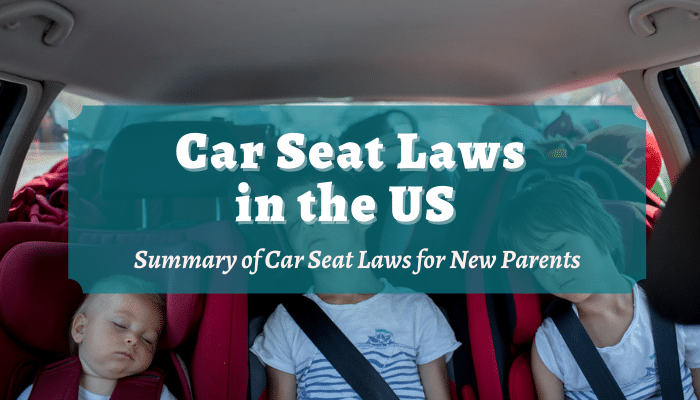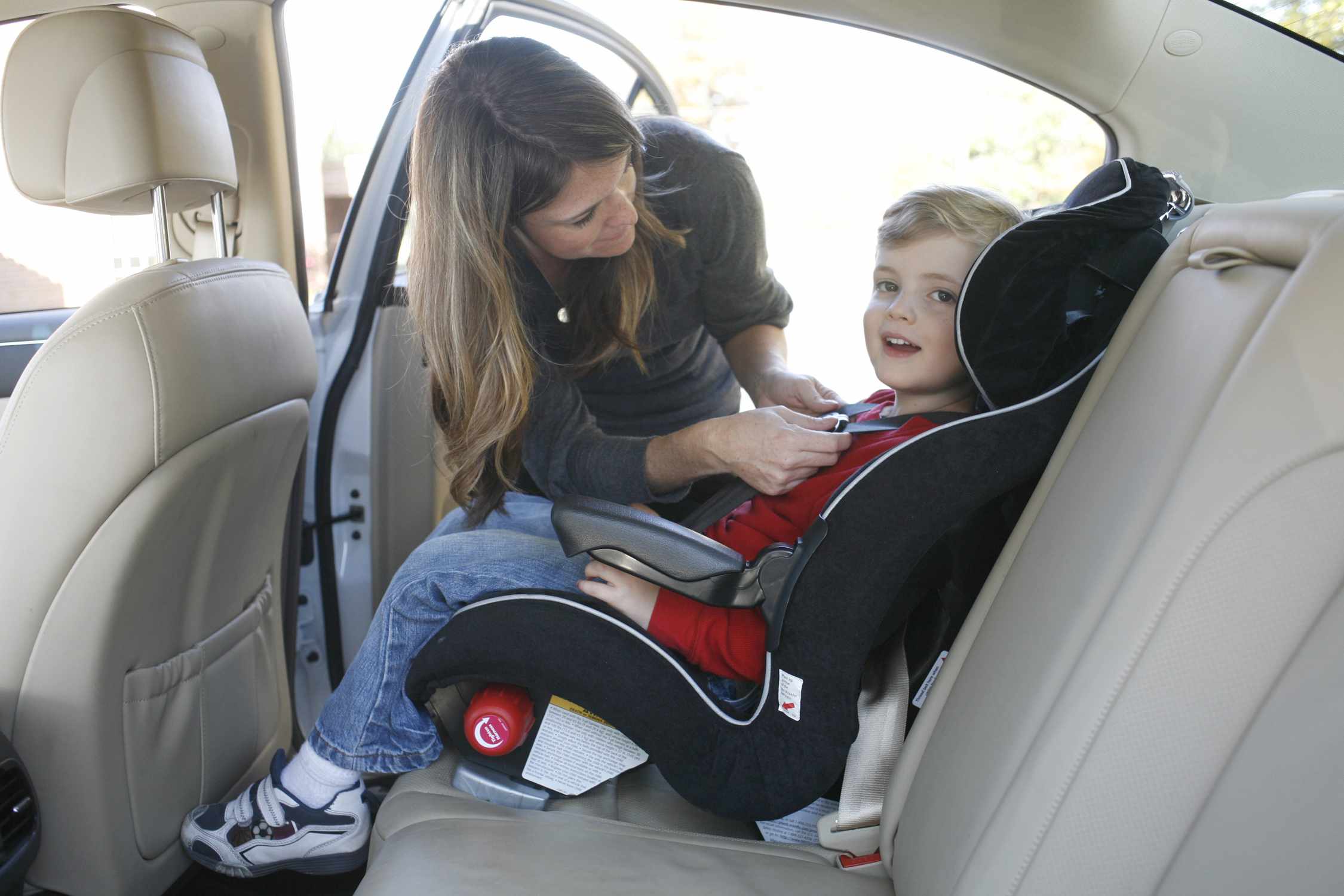
If you're looking for a summary of car seat laws in the US, you're in the right place!
In this article, we provide an overview of infant car seat laws, rear-facing car seat laws, forward-facing car seat laws, and booster seat laws.
And if you're looking for laws that are specific to your state, make sure to check out our individual guides for all 50 states (click a link below to go to your state):
Infant Car Seat Laws in the United States

Infant car seat laws in the United States can vary from place to place. States typically have a height or weight limit that requires children to ride in a car seat until they reach certain developmental milestones. A few points parents and caregivers need to keep in mind include:
Infants and children should sit in the back seat of motor vehicles whenever possible. Ideally, children who are in a car seat should be placed in the middle of the back seat.
Rear-Facing Car Seat Laws in the United States
Laws specific to rear-facing car seats in the United States are different from state to state; however, there are a few common themes. These include:
Parents need to make sure the car seat is buckled securely into the motor vehicle. A lot of hospitals will show parents how to use the car seat before they are discharged from the hospital.
Forward-Facing Car Seat Laws in the United States
Similar to other car seat laws, forward-facing car seat laws in the United States can also vary from place to place. A few common rules that parents and caregivers need to keep in mind include:
Once children outgrow a forward-facing car seat, they should be transitioned to a booster seat. Parents should try to keep a forward-facing car seat in the middle of the back seat.
Booster Seat Laws in the United States

Children need to remain in a booster seat until they are tall enough for the seat belt to keep them in place securely. Children who are not tall enough may not have the shoulder belt pass across their chest. It may choke them across the neck, or it may not give them any protection at all.
Even though booster seat laws can vary from state to state, children between the ages of 5 and 8 are typically required to use a booster seat. Specifically, children should remain in a booster seat until they reach four feet, nine inches tall. The booster seat should be located in the back seat.
Once children reach this height, they should be tall enough to transition to a regular seat with the car’s typical seat belt system; however, children should still sit in the back seat after they graduate from the booster seat.
FAQs: Car Seat Laws in the United States
Some of the most common questions people ask about car seat laws in the United States include:
The laws regarding seat belts in motor homes can vary from state to state. As a rule of thumb, if you are seated in the front of the vehicle and the engine is on, then you need to wear your seatbelt. If you are seated in the back of a motorhome, a seatbelt is probably not required by law. As a safety measure, you should wear your seatbelt every time you are in a motorhome and it is moving.
The first seat belt law, which is part of the Motor Vehicle Safety Standard, was introduced in 1968. The law required all motor vehicle manufacturers to fit seat belts into their vehicles. The use of seat belts did not become mandatory for drivers and passengers until every state in the United States introduced its own individual seatbelt law.
New Hampshire is currently the only state in the United States that does not have a mandatory seat belt law for adults.
Make Sure Your Child Is Protected
These are a few of the most important points parents and caregivers need to know about car seat and booster seat laws for their children. Remember that the specifics regarding car seat and booster seat laws can vary from state to state, so parents and caregivers need to check with their local jurisdiction.
Sources:

Growing up I was a carefree male going about life like there was no tomorrow. Naturally, I ‘grew’ up, settled down and started a family.

Going from an independent carefree male to a family man was somewhat of a U-turn and required a lot of learning. Luckily for me, my wife works in education and has always been the shining light always ahead of me on all factors kids related.
Initially, my wife didn’t have a driving license (luckily this has now changed and it does make life easier), and all things car related were my task. Child locks were the obvious starting point which lead me down a rabbit hole.
So far we have personally tested dozens of convertible car seats and have owned five despite neither of our kids having reached the age of 5! Simply put, a car seat can be great on paper, work great on trying out but can fail on you in real life.
This is why I have put together this website – to help inform and educate you!
Of course, as I mentioned above, at the end of the day your experience will be the best test so I’d love to hear your experiences and feedback in the comments.
To contact me personally, please do so through my contact page.
I look forward to hearing from you!
Peter
P.S. If you click a link on my site and end up buying a car seat on Amazon, I’ll get paid a small commission (or as the Amazon lawyers put it: “As an Amazon Associate I earn from qualifying purchases”)


Leave a Reply